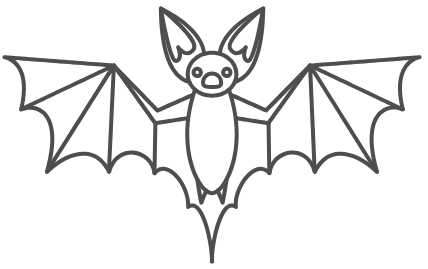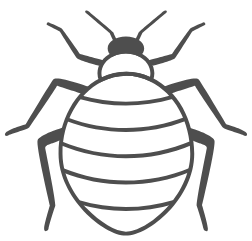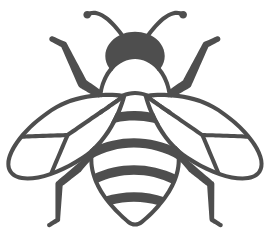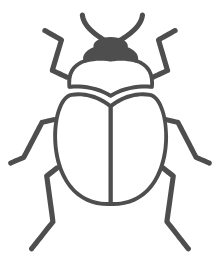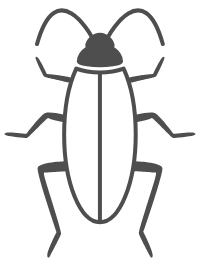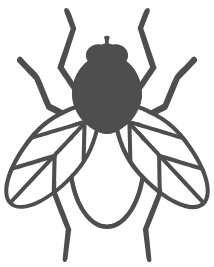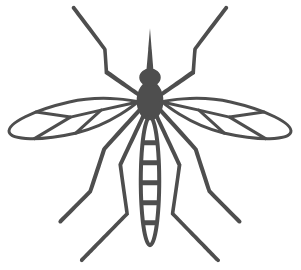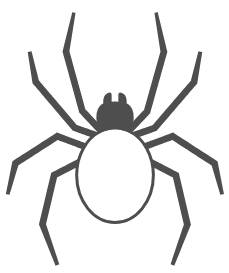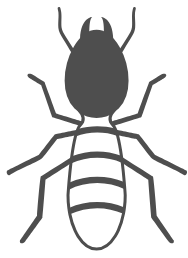Ant Exterminators, Control & Removal
- YEAR-ROUND PEST SOLUTIONS
- RE-SERVICE AT NO CHARGE
- SATISFACTION WARRANTY
Your Local Ant Control Experts
SERVING GEORGETOWN COUNTY | HORRY COUNTY
Bugs Out Pest Control has been solving ant pest control issues for Georgetown County and Horry County. Our ant exterminators will quickly eliminate ants, show you likely spots where they are entering your home, and recommend ways to ensure your house stays ant-free. Ants are the number one household pest, nationwide. These pests may be small, but their colonies can grow to large numbers—before you know it, you could have ants marching in lines throughout your entire property.
At Bugs Out Pest Control, we know how frustrating a never ending ant problem can be for you and your family. Our exterminators for ants will work with you to develop an ant control plan to keep ants out of your home for good.
Your Local Ant Control Experts
When winter comes to an end, it’s time to celebrate: the return of warm weather, and the anticipation of spring and summer. But when warm weather arrives, so do ants. Seeing just a few ants in your home from time to time can signal that a larger problem is to come. So how do you stop an ant infestation before it begins? The key to ant control is prevention. At Bugs Out Pest Control, our professional ant removal technicians can help you to identify and eradicate ants from your home or business.
Need an Ant Control Estimate?
Ant Exterminators for YOUR HOME
Our Ant Pest Control Methods
The most important step to getting rid of your ant infestation is proper identification of the species. The ant exterminators at Bugs Out Pest Control can inspect your property, identify the species, and offer a customized solution for your ant problem.
We will take the following steps to keep you ant-free:
- Thorough inspection: If you have an ant problem, our ant removal technicians will thoroughly inspect your property to locate where and how the ants got inside your home in the first place.
- Ant extermination: After we’ve found the root of the problem, our exterminator for ants will implement safe, effective, and long-lasting ant pest control methods to get rid of the infestation.
- Prevention services: Once treatment is complete, our ant exterminators will work with you to implement a number of ant prevention measures and set up an ongoing ant control plan to keep you ant-free.
Common Ants in Pawleys Island
Pawleys Island Best Ant Exterminators
When to Call an Exterminator For Ants
If you’ve done all you can to prevent ants or have exhausted your DIY ant control methods to no avail, it’s time to call your local ant exterminators at Bugs Out Pest Control. Not only can we safely eliminate your current ant infestation, but we can also provide you with year-round pest control services to prevent future ant pest control issues. For more information about ants or to learn how we can control ants, contact us today!
Need an Ant Control Estimate?
Frequently-Asked Ant Questions
Around the world, there are more than 12,000 types of ants. In the United States, there are upwards of 1,000 ant species. Out of those, there are nearly 25 that are known to infest homes. Here in Pawleys Island, there are just a handful of ants that we regularly deal with, including odorous house ants, pavement ants, carpenter ants, and fire ants.
Ants are capable of biting humans, but their bite is not painful. However, some species—like the fire ant—can inflict a painful sting. Most ants do not bite humans and are generally not considered dangerous, however, it is important to remember that some species can bite and sting, introduce diseases, damage electrical wires and equipment, and contaminate food sources.
Ant colonies can grow to contain more than 10,000 members, and some can even branch into super-colonies wherein multiple nests and colonies cooperate. Ants are known to be very social insects. They live in colonies with a leader queen ant as well as worker ants. In fact, most ant species contain four different types of ants: the queen, drones, female workers, and reproductives. The average lifespan of an ant colony varies—fire ant colonies, for example, can live up to seven years! The larger the ant mound, the more mature and large the colony within.
Ants are considered omnivores for feeding on both plant and animal matter. Depending on the species and the time of year, they will be attracted to protein, sweet and greasy substances. Spilled foods, crumbs, and pet food left out in the open appeal to ants. Ants also need water to survive. Excess moisture in the kitchens or bathrooms from leaky pipes and faucets will often draw ants into the home. Thankfully, you can easily prevent ants by limiting the things they are attracted to in your home.
Ants live outdoors in underground nests. When seeking food, water, and shelter ants can enter homes through cracks in the foundation, any gaps or openings in exterior walls, vents drains, or cables. Ants also sneak in underneath garage and exterior doors and through holes in window screens and gaps around windows and doors. When scout ants find a food source in your home they will lay down a chemical trail for other ants to follow. This is why a small ant problem can suddenly get much worse in a matter of days.
During certain times of the year, ants will swarm in order to mate. This is the cause of why you may see flying ants in your home. These winged ants are called “reproductives”. When a colony is expanding, the reproductives come out of the colony to mate. These flying ants are often confused with termites, however, ants have thinner waists and shorter wings. If flying ants are seen in the home in the winter, it’s an indication that ants are living within the structure.
Argentine ants, carpenter ants, odorous house ants, and pharaoh ants will all nest in walls and protective voids in homes, especially during the colder months. Ants will enter homes through cracks and crevices to access food and moisture resources indoors that they lack outdoors. Once inside your warm walls, they can chew through and damage electrical wiring causing a potential fire hazard. Other than your walls, ants will hide in cracks in your bedroom, living rooms, basements, air conditioning and heating units, and more.
Ant activity dips in the winter, but they don’t disappear completely. Ants will often prepare for the winter by seeking out warm places deep within soil or under rocks to wait out the cold months ahead. They also will consume a large amount of food in the fall to put on fat in order to overwinter. Their movements become sluggish, and colonies will hunker down in clusters until the warm weather returns.
Ants pose the biggest threat to properties with the destruction certain species can cause. Here in Pawleys Island, the carpenter ant is considered to be very dangerous because of their wood-destroying habits. While not as dangerous as termites, their activity can cause structural damage over time. Tawny crazy ants are also considered dangerous for their habit of nesting in electronics. Once inside, they can chew on wires and create a fire hazard.
Ants can be extremely difficult to get rid of, and unfortunately, DIY ant pest control is mostly ineffective and can be dangerous if not used properly. If you spot one ant or a trail of ants in your home, follow the trail to locate their entry point. Entry points can include baseboards along walls, underneath doors, plumbing fixtures, and cabinets. Seal entry points with a silicone-based caulk and spray undiluted vinegar along the trail. Repair leaky plumbing and eliminate food sources by storing foods in containers, cleaning floors, and sanitizing all surfaces. Always call your local ant exterminators when you are having recurring infestations.
Bugs Out Pest Control Reviews
We really appreciate that Jeff is always on time! He always wears show covers from before the pandemic. Gives us an explanation of what he is doing makes us comfortable. Thank you so much, he is wonderful!
– Chihiro Oguchi
Pest Control You Can Trust
At Bugs Out Pest Control, we protect against the disease and damage that can be caused by common pests.

